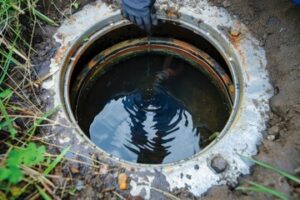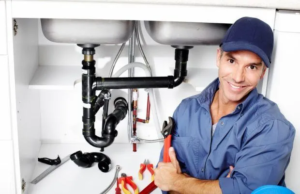Proper disposal of liquid waste is crucial. When left untreated, it can leak into vital watercourses and cause untold environmental harm.

Pricing for Liquid Waste Disposal Perth depends on the volume, location, and frequency of service. It also depends on whether or not the waste is hazardous.
There are several different types of liquid waste that are produced by households and businesses, and each requires its own unique treatment methods. Liquid waste is any type of trash that exists in a liquid form, and it often contains pollutants or contaminants that need to be safely removed from the environment. This is why there are far more rules and regulations surrounding liquid waste disposal than there are for dry waste, as it can be very harmful if not handled properly.
When liquid waste is not properly disposed of, it can contaminate water supplies and damage ecosystems. It can also pose health risks for individuals when it comes into contact with the skin, as well as cause long-term illnesses if ingested. As such, there are a lot of rules and regulations around liquid waste disposal to prevent this from happening, with most businesses requiring their employees to wear protective clothing when handling the trash.
Liquid waste is created as a byproduct of almost every manufacturing process, whether it be industrial materials, beauty products or pharmaceuticals. It is also generated by human beings as we excrete waste naturally, and flush it into sewage and wastewater systems. Liquid waste can then be stored in tanks, lagoons and other facilities before it undergoes further treatment or disposal.
Some of the most common liquid waste includes grit trap waste, grease trap waste, chemical toilet waste, septic tank pumpings and domestic septage waste. These are all regulated and require specialized treatment, as they can contain potentially harmful chemicals and bacteria.
Other liquid waste may be a byproduct of manufacturing processes, such as oily or metal-bearing water. This type of waste is often used for cleaning or cooling equipment, and it is important to dispose of it correctly as it can contain hazardous substances.
Most of the time, liquid waste will be treated before it is disposed of. This is done to ensure that it does not pollute the environment and to make sure that it can be reused for other purposes. Usually, it will go through multiple processes to remove contaminants, such as biological nutrient removal and evaporation.
Liquid waste can also be solidified and turned into fertilizer using superabsorbent polymers (SAPs). This is an environmentally friendly way of turning liquid waste into a safe and useful product. It is often used by waste management professionals to prevent harmful liquids from leaking into waterways, groundwater aquifers or other sensitive environments.
Liquid waste can also be incinerated or sent to landfills, depending on the type of trash that is being dealt with. However, many of these methods are not considered to be the best options for dealing with liquid waste, as they can have a negative impact on the environment and human health. There are better ways of disposing of liquid waste, such as converting it into energy, soil amendments or water treatment. The more that you know about this type of waste, the better decisions you can make when it comes to disposal.
Hazardous Waste
Hazardous waste is any chemical or product that has the potential to cause harm to human health or the environment if not managed properly. This type of waste often contains flammable liquids like gasoline or kerosene, corrosive materials that eat away at metals or cause skin or eye irritation, toxic chemicals that are poisonous or harmful, and other dangerous substances. Businesses and individuals that generate hazardous waste must work with a licensed disposal company that follows environmental regulations to prevent contamination of soil, water or air quality.
While there are several standard methods for disposing of hazardous waste, one option that is increasingly popular is to recycle it. This can help reduce reliance on raw materials, conserve natural resources and cut energy use. There are three main ways to recycle hazardous waste: reclaiming, reuse and burning for energy recovery.
Companies that generate hazardous waste are required to label containers and provide waste characterization data to the disposal company they contract with for disposal services. This information is used to determine which disposal method is best for the waste. Hazardous wastes are usually categorized as toxic, reactive, ignitable or corrosive. Toxic wastes have immediate and long-term negative effects, while reactive wastes violently react with elements like air or water. Ignitable wastes burn at low temperatures and can cause fires, and corrosive wastes are acidic or alkaline substances that destroy solid materials and living tissue when they come into contact with them.
The EPA has developed a classification system that organizes hazardous waste into categories based on their properties. The F list includes general wastes that are not limited to a specific source, while the K list identifies specific wastes such as sludge from petroleum refining or inorganic chemical manufacturing and spent cyanide solutions. The P list contains acute hazardous wastes, which are poisonous even in small quantities.
While many companies may produce hazardous waste, most industries also generate large volumes of non-hazardous waste that does not negatively impact the environment. Medical waste, for example, is a common type of hazardous waste that must be disposed of correctly, but most other types of industrial waste are not considered to be hazardous, such as old equipment and uncontaminated animal tissue from hospitals and veterinary clinics.
In addition to implementing disposal methods, businesses that generate hazardous waste must adhere to strict environmental regulations when storing it. Failure to follow regulations can result in costly fines, lawsuits and the shutdown of business operations.
Workers in haz waste facilities typically wear protective Tyvek suits, gloves and safety glasses, and the facilities are monitored by local bomb squads and state radiation services to ensure that no contaminants leak into the environment. Businesses that generate hazardous waste are required to have annual training for waste generators, satellite accumulation area points of contact and personnel who handle outdoor storage of hazardous wastes.
